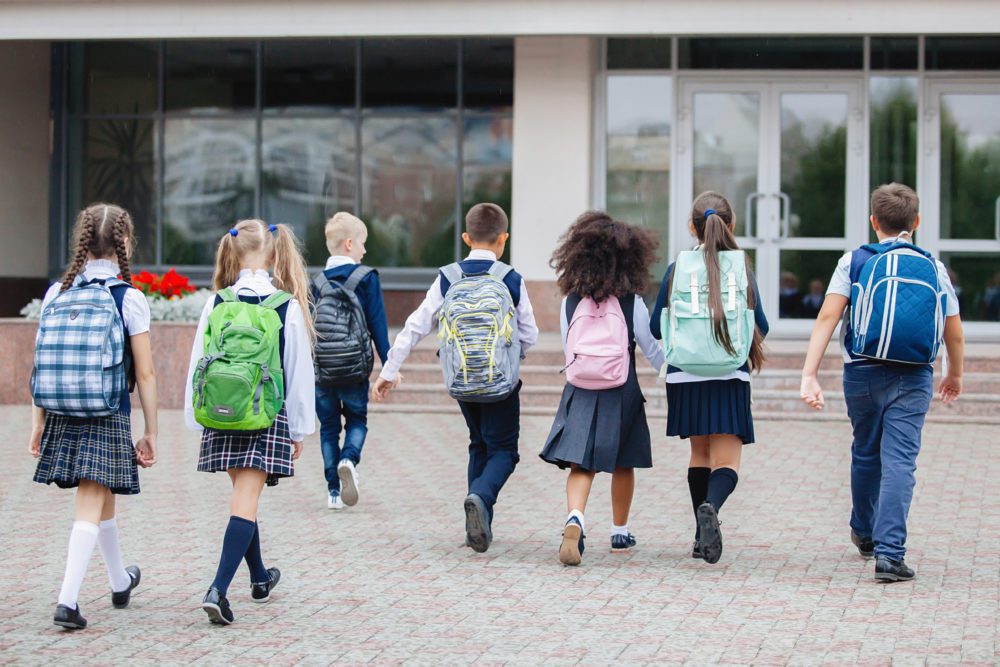Anxiety & Fear / Calming Children, Building Resilience, Essential Kids Blog, Maggie in the Media, Schooling & Homework, Separation Anxiety, Stress
Another new normal: back to school after isolation

Schools across Australia are gradually opening their doors for more and more students to return to face-to-face learning after many weeks of home isolation. The relief of many parents to hand the baton of schooling back to teachers is almost palpable, especially those who are working from home at the same time.
The schooling from home experience has been different for every family. Some have reported that their children have thrived being out of the classroom. Many have seen their children enjoy having enough time to complete their tasks with more autonomy and freedom. Some children who have learning challenges have found the home environment more supportive as they are able to get the help they need immediately away from the distractions of the classroom.
I’m sure for most families, some days things went well, and other days went from bad to worse and ‘crisis schooling’ definitely was a source of more conflict in many homes. Having access to technology, Wi-Fi and space have been common challenges in these times. Zoom meetings have become commonplace and they’ve had their pros and cons. There have been challenges and gifts, so returning to school may be seen with mixed feelings.
Another new normal
Children have become used to a new sense of predictability through this time of isolation, even though many have missed their friends, their extracurricular activities, their extended families and even their playgrounds. Over a period of six weeks the brain gets used to a new normal and returning to school is going to take a little adjusting. School will be different as staff have to find ways to ensure social distancing and intensive hygiene practises within the school environment. Drop-offs will be very different to before COVID-19 and it is important to forewarn your children that you are unable to go in the school gate.
For many of our younger students it will feel very much like the beginning of the year so be prepared some regression. Separation distress may reappear and given that you are unable to stay beside your child as you could at the beginning of the year, be prepared to have your swagger on. Be as positive and enthusiastic as possible however note that it can take a couple of weeks at least for kids to feel comfortable again in transitioning from your safekeeping to their school’s safety. Have faith in your teachers that they will be aware of the need to restore the sense of strong relationships and a safe environment for your children. Consider putting a special note in your child’s lunchbox or writing a message on a banana as little things like this can help children feel safer, happier and connected to you from a distance.
Readjusting to social life at school
For the children who have continued to attend school during isolation, many of them will have formed new friendship groups. Again, be prepared for some social dynamics that may be a little stressful for your child as they socially navigate the school setting. Children will be discouraged from touching each other and while this is a health precaution, it’s also a biological need in children so not being able to be close to their friends may cause some kids distress. It can really help if you have conversations with your children, many times over this transition back into full-time schooling. Please teach them to do elbow hugs and virtual high fives!
I’ve heard on the grapevine that some kids who have returned to the classroom already have complained to their parents about how noisy the classroom has been compared to being at home. Again, children will take time to adjust to the new normal and the most important thing that parents can do is listen, validate their feelings and reassure them that adjustment takes time. Over-reassurance with phrases like “it’ll be fine” and “there’s nothing to worry about” can be unhelpful when our children are experiencing situational anxiety. Once things become more predictable, and they feel safer the anxiety tends to settle on its own.
Make time to restore
As this is an unsettling time, you may notice your kids are more fatigued and tired than usual. This is normal as the nervous system is working hard to help your child cope with our unpredictable world. Allow time after school to be restorative with some time outside in the fresh air, lots of child-directed play and with as much TLC as possible. Things will improve gradually and before you know it your child will have adjusted to returning to full-time schooling, despite the fact that we still live in a world where the coronavirus is a threat.
Lastly, please be mindful of how hard our teachers have been and are still working for your children. Planning online schooling at the same time as in-class learning takes hours of extra work. The constant monitoring of student interactions, while keeping things calm and safe takes energy. Please express your gratitude so your kids can see that we value everything they do. The key to a healthy transition is patience while building predictability and the restoration of the student-teacher relationship. It may take some time. Be patient – change takes time even if it seems like it’s a change back to something that was normal.
Watch Maggie’s videos on the transition to big school.
Check out Maggie’s ABC podcast, Parental As Anything, which ran a series of episodes about the pandemic for families in isolation.
Image credit: ©️ olgasparrow /Adobe Stock – stock.adobe.com



